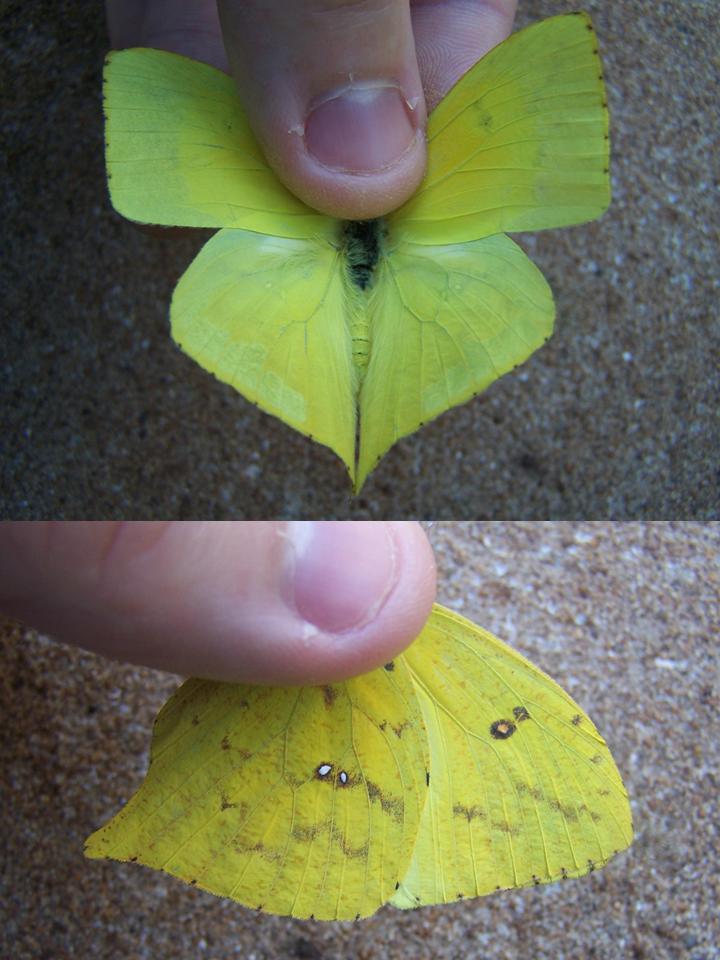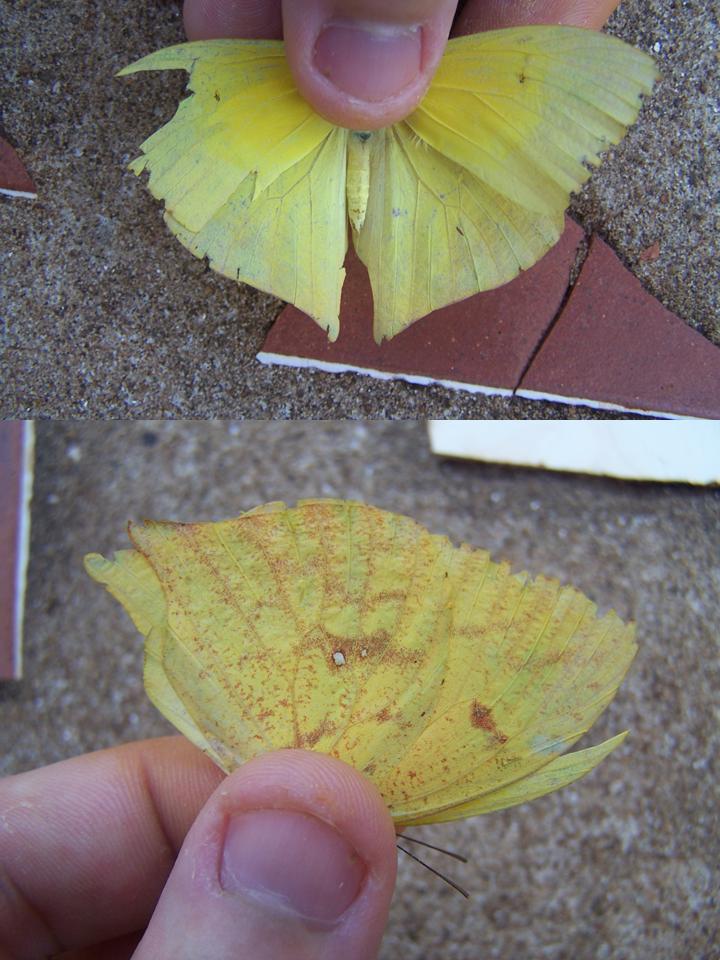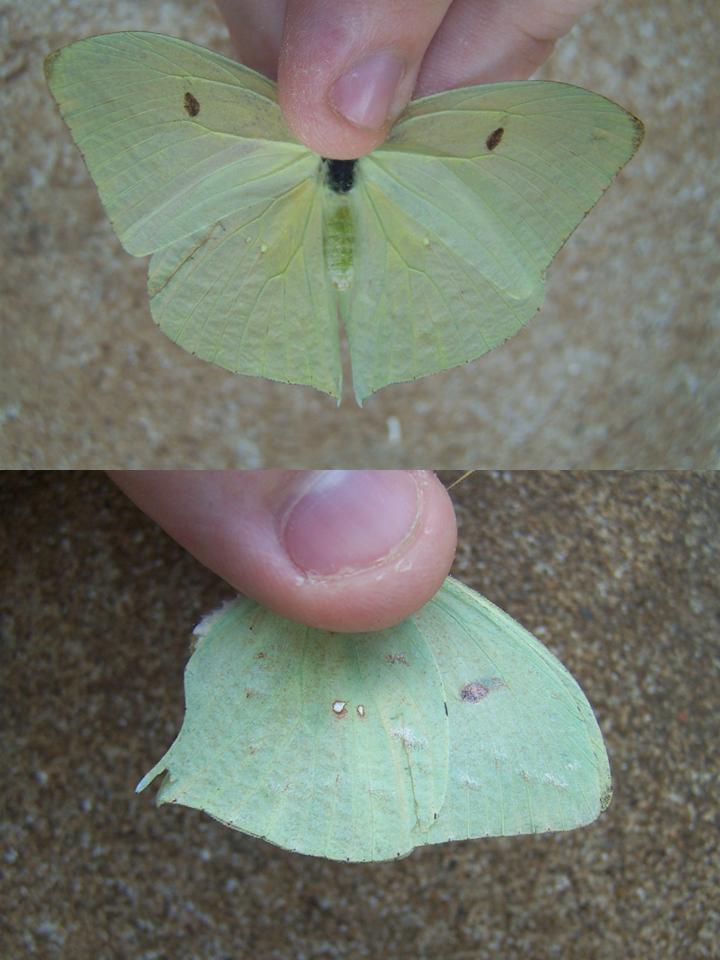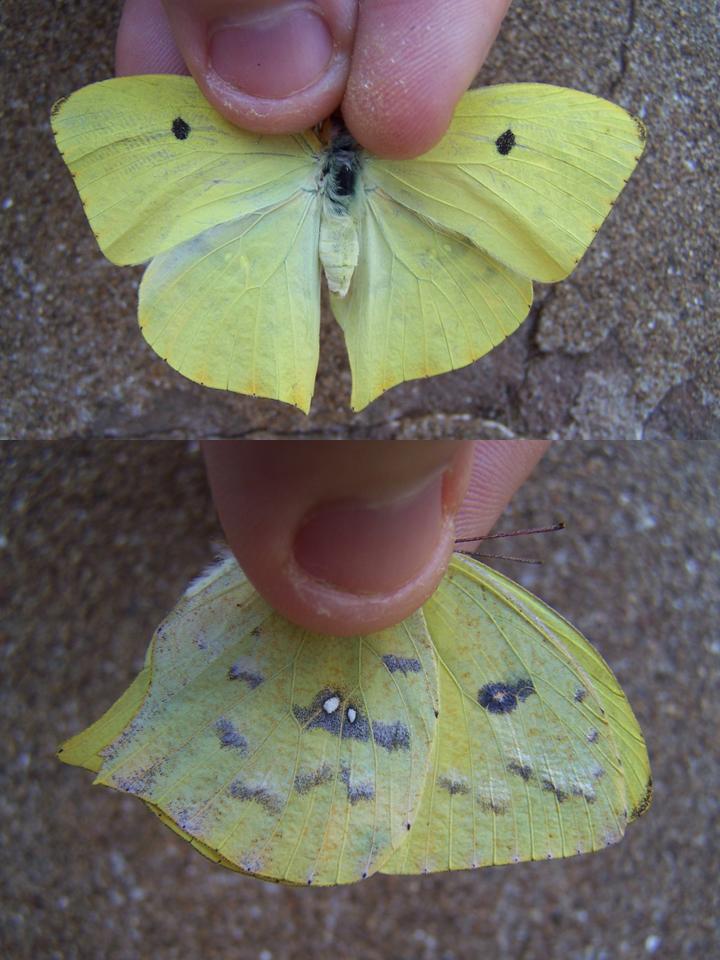

Designed by Paul Smith 2006. This website is copyrighted by law. Material contained herewith may not be used without the prior written permission of FAUNA Paraguay. Photographs on this web-site were taken by Paul Smith, Hemme Batjes, Regis Nossent,
Alberto Esquivel, Arne Lesterhuis, José Luis Cartes, Rebecca Zarza and Hugo del Castillo and are used with their permission.
Phoebis neocypris neocypris (Hübner 1823)
ENG: Tailed Sulphur
ESP: Ciprina
JIZ: Forewings square, slightly pointed at apices, hindwing rounded with long pointed “tail” at tip of anal margin. Folded wing triangular, with slightly rounded apex, conspicuous “tail” and undulated outer margin. Sexually dimorphic. Poses with folded wings. FLI: Fluttery but strong and straight.
UPP: M (Fig 1-2) Variable in tone, but essentially yellowish or greenish-yellow with stronger yellow flush on basal half of the forewing. Small, barely discernible brownish median spot present on forewing in some individuals (Fig 2). F (Fig 3-4) Variable in tone from yellowish to pale greenish-white with conspicuous brownish ovaloid median spot on forewing and indistinct brownish edges to costal apices and outer margin of forewing.
UND: M (Fig 1-2) Variable but tone of yellow underside generally matching upperwing with peppering of rust speckles concentrating around veins. Smudgy brown median spot on forewing and one or two white median spots on hindwing (upper half the size of lower when present) surrounded by concentration of rust-coloured speckles. F (Fig 3-4)Variable but tone of yellow underside generally matching upperwing . Smudgy brown median spot on forewingand two white median spots on hindwing (upper half the size of lower) thinly bordered brown. These spote vary in their conspicuousness. Some individuals show realtively unmarked underwings (Fig 3) others with a variety of more or less prominent random brownish and greenish squiggles scattered across both wings (Fig 4).
BOD: Head and abdomen similar in tone to overall colouration of hindwing. Upperside of thorax black with sparse yellow-white hairs. Antennae brown. Eyes bicoloured, brown above body-colour below. Proboscis black. Legs body colour.
MMT: A medium-large Sulphur. No significant sexual difference in measurements. CL - 34.3mm(32-36mm); BL - 20.4mm (19-22mm); AB - 11mm (11mm); WS - 69.8mm (67-73mm); HW - 3.4mm (3-4mm); AL - 12.1mm (11.5-13mm); n=4 (1M 3F).
SSP: Both sexes can be instantly recognised by the tail, unique amongst the Sulphurs. However this character is not always obvious unless the individual is at rest or captured. Males are similar in overall jizz and size to Phoebis argante, but that species tends to be slightly more mustard yellow in colouration. Greenish individuals can be recognised by their colouration, which is similar only to Rhabdodryas trite, a species that has an otherwise quite different underwing pattern. Females lack the obvious black margins present in many other female Sulphurs.
ABU: Uncommon, generally less common than other Coliadinids though it frequently mixes with them at flowering bushes.
HOS: Plants in the family Fabaceae including Acacia visco, Anadenanthera, Calliandra, Cassia fruticosa, Inga, Parapiptadenia, Senna (Canals 2003).
Citable Reference: Smith P (2007) FAUNA Paraguay Online Handbook of Paraguayan Fauna Butterfly Species Account 3 Phoebis neocypris.
Last Updated: 3 September 2007.
References:
Canals G 2003 Mariposas de Misiones - LOLA, Buenos Aires.
 | FIGURE 1 |
|
 | FIGURE 2 |
|
 | FIGURE 3 |
|
 | FIGURE 4 |
|
FIGURES 1 - Encarnación, Departamento Itapúa (Paul Smith 1 July 07); 2 - Encarnación, Departamento Itapúa (Paul Smith 5 May 07); 3 - Encarnación, Departamento Itapúa (Paul Smith 15 April 07); 4 - Encarnación, Departamento Itapúa (Paul Smith 14 June 07);

